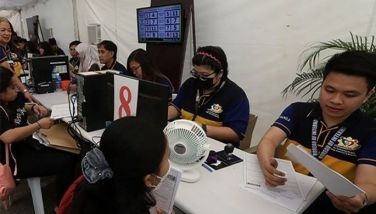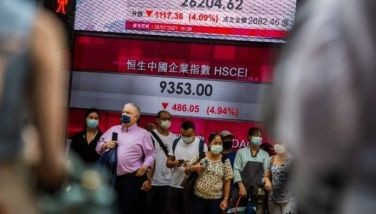Forex controls in the 1950s: Philippine economic history

The 1950s were an era of foreign exchange and import controls for the Philippines. This lasted for a solid one decade during which the country undertook to rehabilitate from the war and move toward political and economic independence.
We could have built the nation better in those formative years. The choices we took were misled by beliefs and objectives that were innately guided by a national psyche during the struggle for political and economic independence.
Mistakes of early nationhood are common among new countries.
Leaders’ failure to see the immensity of the economic problem. Foreign exchange controls would lead to serious misallocations of foreign exchange resources that the country had either at its disposal or which could have been secured at the birth of independence.
For in no time at all, adopting the fixed two-to-one peso exchange rate made the country spend most of its dollar resources on imports of consumer goods and caused a quick depletion of those dollar resources, hence necessitating by 1949, import and exchange controls.
The desire to sustain the two-to-one peso exchange rate with the US dollar by Filipino leaders was a dream that had little basis in reality.
What badly war-destroyed countries did to their exchange rates. Other countries which had suffered badly from the war accepted their fates by adopting a realistic value of their currency because their economic conditions required it.
Japan, the defeated country, began the postwar period rebuilding from a grossly depreciated exchange rate. In fact, 360 yen-per-dollar enabled them to cheapen everything in Japan as they recovered from the war and gradually embarked on an export-oriented reconstruction process that made it re-emerge strong by the 1960s.
South Korea, also badly economically destroyed and depleted, especially first by the Japanese war occupation (up to the end of World War II) and also after the Korean War (post-1954), had also permitted their currency – the won – to be depreciated.
China was in a civil war for decades, and when Chiang Kai-shek refortified the Kuomintang government in Taiwan in 1949 after being driven from the mainland, that government also depreciated the Taiwan dollar as the market signals permitted.
South Korea and Taiwan had their own unique learning experiences from stringent exchange controls that enabled them to escape from long-time economic uncompetitiveness by redirecting their economies toward their labor-intensive and export-oriented booms of the 1960s and the 1970s.
The three major East Asian economies represented the first wave of the East Asian economic miracle during the 1960s to the 1970s.
At the end of the Pacific war, the Philippines was judged much better prepared by experts and international institutions to overcome the challenge of postwar reconstruction and to build a strong economy, next only to Japan.
What we did. What the government undertook was to adopt stringent economic controls as the supply of dollars became depleted. Exchange controls were initially used by the government to hold off crisis.
But later, it became a tool for directing the traffic of usage of dollars.
Expectedly, exchange controls would lead to a sharpening of the rivalry for influence between industries that would provide the earnings of dollars and those that would become heavy users of dollars.
What the exchange controls failed to provide was a path toward uniting these two opposing elements. That was possible as demonstrated by other countries such as the East Asian miracle economies.
Instead of promoting industries that earned exports through comparative advantage in production, the government embarked on support of industries that aimed mainly to develop the domestic market for industrial goods. This meant more and more reliance on protection rather than production efficiency through international competition.
For a long time, the policies were biased toward favoring mainly industries that were heavy users of dollars. This meant supporting the industrial objectives of nationals who were getting into industry, thereby neglecting and sometimes discriminating against foreign capital that wanted to gain an industrial production foothold in the country.
New and necessary industries. An aspect of the early economic efforts was the active promotion of new industries. The law encouraging the new and necessary industries was one of the early industrial promotion laws after political independence.
In general, such an investment incentive law should have promoted all industries –export-earning industries that displaced imports for the home market. Tax-exemption and duty-free importations of raw materials and capital goods were principal incentives, supported by access to credit and to foreign exchange allocations.
The early industrialization program was, however, narrowly focused on supporting enterprises owned or controlled principally by Filipino nationals. Following the admonitions of the constitution that had restrictive provisions on foreign direct investments, the industrial promotion de-emphasized the attraction of foreign investments.
In other countries, the industrial promotion program was inclusive in attracting foreign enterprises, even if wholly-owned, especially if they earned large markets abroad. The law on new and necessary industries was more insular in coverage and very strictly nationalistic in emphasis.
The result of this early error was that even American nationals who were favored by the parity provision did not come and put up large investment ventures. The country mainly attracted American enterprises that wanted to continue selling mainly to the domestic market.
In this way, the new and necessary industries began to consume the limited foreign exchange resources the country had and failed to put up expanding markets that branched into exports.
Thus, the seeds of high protection (fostered by exchange controls and, later, tariffs) were planted during this early period of economic development.
We, therefore, missed opportunities in those critical years to gain a foothold in the American market for consumer goods despite our preferential trade agreement with the US – which started as free trade up until 1974.
Compare this to the massive efforts that Japan, South Korea, Taiwan, ahead of other Southeast Asian countries, had accomplished in penetrating the US market for their export industries. We had the basis through a preferential trade agreement to access the American market in our hands.
In the case of these other countries, they had to find their own ways to success in trade and economic policy to gain the US market foothold. Once they established it, they used it to their economic rise as industrial nations.
My email is: [email protected]. For archives of previous Crossroads essays, go to: https://www.philstar.com/authors/1336383/gerardo-p-sicat. Visit this site for more information, feedback and commentary: http://econ.upd.edu.ph/gpsicat/
- Latest
- Trending
























